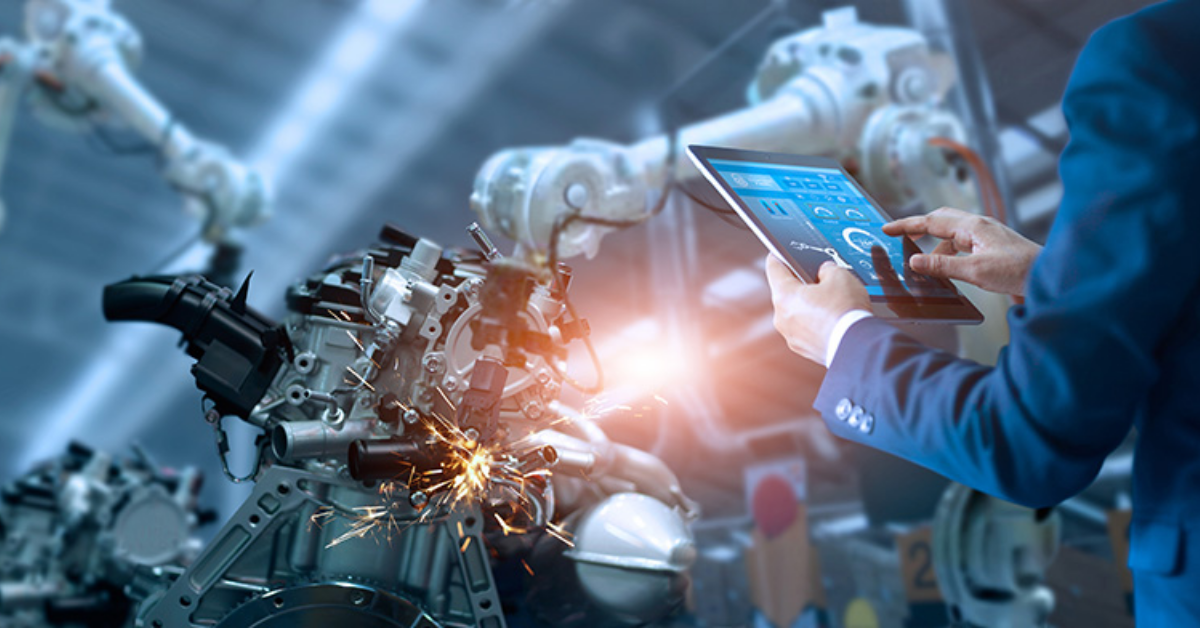Blog

Enhancing human skills with robots
Robotic solutions have come a long way since their beginnings as large, cumbersome machines occupying vast spaces. Today, robots are more versatile and adaptable than ever. They are fast becoming an integral part of many business operations.
Much has changed recently in the business landscape. Supply chain disruption, labour shortages and increasing geopolitical turmoil are causing many businesses to reconsider how they operate.
Robots and other forms of automation are becoming an essential tool to navigate these challenging situations.
How will things change this year? We can't know for sure.
We come up with some predictions about the trends that could dominate the robotics industry this year...
1. Data-driven automation
We are in the big data decade, and robotic automation is no different. Automation technology is becoming increasingly data-driven, with a growing focus on applying real-world data-driven solutions. According to some analysts, a third of European businesses, for example, now prioritise data-driven automation. One place where you can see data-driven automation in practice is in supply chain logistics, where robots are being used to implement decisions based on real-time logistics data.
2. Enhancing human skills with robots
Robotic technology is also increasingly applied in combination with other technologies. Some 35% of organisations will integrate physical robots with other technologies to enhance human skills and counter labour shortages. Companies are increasingly recognising that robots are not a replacement for human labour, but a way to enhance what their human workers can already do. With many industries facing worrying skills and labour shortages, robots are becoming a necessary way to fill the growing gaps.
3. The use of robots will continue to grow
Collaborative robots have become a significant part of the robotics landscape over the past decade. By 2027, cobots are expected to account for 30% of the total robotics market. Cobots are designed to work safely alongside humans and be inherently easy to use. This makes them ideal for companies that have no previous experience in robotics and do not have enough space or resources to accommodate large industrial robots that require additional safety fencing. This widespread adoption of cobots is bringing automation to far more companies than was previously possible.
4. Autonomous mobile robots arrive
Autonomous mobile robots also seem to be arriving in more and more businesses, especially in the logistics sector. We saw a lot of autonomous mobile robots at this year's Automatica trade fair. The technology, which has been around for years, is finally becoming widespread. Companies are now adopting mobile robots to improve the efficiency of logistics operations in their warehouses and other industrial environments.
5. Skills shortages could hinder automation
We've talked previously about how robots can help companies overcome skills shortages in their industries by taking over the less skilled parts of workers' jobs. However, there is one skills gap that robots cannot help address: the robotics skills gap. The robotics skills shortage is expected to slow the adoption of robotic automation in some companies. This makes it even more important to choose robotic solutions that almost anyone can implement, regardless of their robotics experience.
6. Logistics remains a "top industry"
The logistics sector has seen a huge boost in attention during the global pandemic of 2020, along with an increase in e-commerce worldwide.Logistics remains a "sweet spot sector" for robotics as it offers many opportunities for automation and its potential for growth in terms of robot usage. It seems likely that we will see even more growth in logistics-related robotics applications in the coming years. Robotic palletizing remains one of the most popular automation solutions from Robotiq.
7. Automation of electronic assembly will increase
Another 'sweet spot' sector for robotics is electronics manufacturing, especially electronics assembly. Robots can assemble electronic parts more consistently than human workers doing the same job. This can save time and money for companies, while reducing errors caused by manual assembly. Robotic screwdriving is an example of a task that is now easier than ever to do with a robot. This essential task can help speed up the entire assembly process.
8. The automotive industry has lost its lead in robotics
For many years, the automotive industry has been the main user of robotic automation. However, it has recently lost its lead. In 2020, the number of robot deployments for automotive tasks was equal to the number of deployments outside the automotive industry. In 2021, non-automotive applications took the lead for the first time. This change shows how widespread robotic automation has become. It marks a transition point to a future with more robots in more industries.
9. Smarter and more adaptable robotics
Robots are also becoming smarter and more adaptive. The newest wave of robots can incorporate real-time information into their operations. They are able to respond quickly to changes in the environment and modify their operations. As the number of practical artificial intelligence algorithms grows, we can expect to see more advanced and sophisticated robots in the years to come.
10. User-friendly robots are key
With the rise of easy-to-use robotic solutions (such as robotic application kits), the barrier to entry into robotic automation is falling. Robots are now much easier to use by any company, not just companies with robotics expertise. It looks like this trend towards intuitive robots will continue. In addition to app kits, we are also seeing many more "robots as a service" business models as companies look to reduce the friction associated with deploying robots.
If you haven't used robots in your business yet, now is definitely the time to start!
Source:https://blog.robotiq.com/10-robotics-predictions-for-trends-that-will-dominate-2023

Leave a Comment
Comments (0)
No Comments Yet
Be the first to share your thoughts!